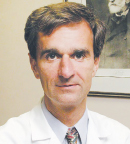Yoga therapy delivered to patients with lung cancer and their caregivers together appears to be a feasible and beneficial supportive care strategy. According to data presented at the 2017 Palliative and Supportive Care in Oncology Symposium,1 the dyadic intervention resulted in a clinically and statistically significant difference in patients’ 6-minute walk test and clinically significant differences in role performance and mental health domains of the quality-of-life assessment. Although the effects were moderate, researchers also observed clinically significant improvements in caregivers’ vitality and role performance.

We were very encouraged with regard to adherence.— Kathrin Milbury, PhD
Tweet this quote
“These data provide preliminary evidence for dyadic intervention,” said Kathrin Milbury, PhD, Assistant Professor, Department of Palliative Care and Rehabilitation Medicine, Division of Cancer Medicine, The University of Texas MD Anderson Cancer Center, Houston. “Targeting families systemically by delivering interventions to both patient and families may optimize treatment effects for patients while helping caregivers battle their fatigue.”
As Dr. Milbury reported, although it’s known that lung cancer patients suffer from severe physical and psychological symptoms, family caregivers also report high symptom burden, including fatigue, sadness, and anxiety. Thus, researchers decided to deliver the intervention to the patients and caregivers together.
“There is a lot of research data regarding yoga in breast cancer patients but very little in lung cancer,” Dr. Milbury explained. “Given the large focus on breathing exercises, we thought yoga would be a good supportive care intervention to help reduce patients’ dyspnea.”
Key Study Findings
For this small feasibility study, researchers delivered the intervention as patients were undergoing radiotherapy (at least 25 fractions). Prior to randomization to dyadic yoga vs usual care control group, Dr. Milbury and colleagues used the 36-Item Short-Form Health Survey (SF-36) to assess different dimensions of quality of life and had patients complete a 6-minute walk test. Dyads were then randomized and reassessed at the end of radiotherapy and again, 3 months later.
Yoga Program for Patients and Family Caregivers
- A dyadic yoga intervention for lung cancer patients and their caregivers demonstrated improvements in patients’ physical function, role performance, and mental health.
- The investigators also observed clinically significant reductions in patients’ symptom burden.
- Caregivers experienced improvements in vitality and role performance.
The yoga program consisted of 15 sessions (60 minutes each) of joint attendance and incorporated 4 main components: joint loosening with mindfulness training; postures (asanas) with deep relaxation techniques; breath energization (pranayama) with sound resonance; and meditation/guided imagery. Breathing exercises and physical postures were focused on opening up the chest area and muscles supporting the lungs. As Dr. Milbury explained, however, the intervention was delivered with the intention of benefiting both members of the dyad.
“One of the most important aspects of dyadic work is the patient is typically in the role of care recipient, so with this program, caregivers were also asked to receive support from the patient with respect to postures they underwent,” said Dr. Milbury. “They helped each other get through the physical aspect of the intervention together, and then the meditations focused on loving kindness, compassion, mindfulness, and acceptance of each other.”
Benefits for Both Patients and Caregivers
Dr. Milbury and colleagues enrolled 32 dyads, of which 26 (81%) completed all assessments. Patients (mean age: 73 years, 63% female, 67% stage III) and caregivers (mean age: 62 years, 38% female, 63% spouses) completed a mean of 12 sessions, and 96% of participants rated the program as “very useful.”
“We were very encouraged with regard to adherence,” said Dr. Milbury, who reported benefits for both patients and caregivers.
Targeting families systemically by delivering interventions to both patient and families may optimize treatment effects for patients while helping caregivers battle their fatigue.— Kathrin Milbury, PhD
Tweet this quote
Controlling for baseline levels and other relevant covariates, multilevel modeling revealed a clinically and statistically significant difference in patients’ 6-minute walk test. Patients randomized to the yoga program walked 478 meters following the intervention vs 402 meters for the control group (P < .05). Dr. Milbury also reported improvements in the role performance and mental health domains of the SF-36 as well as a positive effect on patient symptom burden. -Investigators observed a moderate but clinically significant effect on patients’ dyspnea and a large reduction in sleep disturbance. Finally, although the effects were moderate, the authors reported improvements in caregiver vitality and role performance. Dr. Milbury called the increase in vitality “really important for caregivers.”
At follow-up, the investigators performed dyadic analyses to see how improvements in caregivers contributed to outcomes in patients and observed a significant association with the 6-minute walk test (P < .01). Based on these data, a larger efficacy trial with a more stringent control group is warranted, Dr. Milbury concluded. ■
DISCLOSURE: Dr. Milbury reported no conflicts of interest.
REFERENCE
1. Milbury K, Mallaiah S, Liao ZX, et al: Randomized controlled trial of a dyadic yoga program for lung cancer patients undergoing radiotherapy and their family caregivers. 2017 Palliative and Supportive Care in Oncology Symposium. Abstract 125. Presented October 27, 2017.
CLOSER LOOK AT DYADIC YOGA PROGRAM
- 15 sessions, 60 minutes each
- 4 main components: joint loosening with mindfulness training; postures (asanas) with deep relaxation techniques; breath energization (pranayama) with sound resonance; and meditation/guided imagery
- 32 dyads enrolled; 26 completed all assessments
- 96% of participants found program “very useful”


